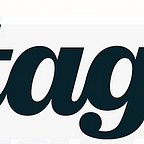Hanukkah, Chanukah or Khanike?
Hanukkah’s diverse traditions and evolution are perhaps best captured in the debates surrounding its spelling. Whether you’re team Hanukkah (endorsed by smartphone autocorrect), prefer the guttural Chanukah for some degree of authenticity, or opt for the Yiddish Khanike, the Hebrew word “חנוכה” cannot be perfectly transliterated into English. We sought further ways to capture the intended meaning from Tag Localization’s Hebrew linguist Michal Eyal Stossel.
Michal believes that no matter how you write Hanukkah, it is “the history, what we do, what we eat, and what we sing” that truly define the holiday. Hanukkah, which means “dedication” in Hebrew, commemorates the rededication of the second Holy Temple of Jerusalem after the Jewish Maccabee warriors revolted against the Seleucid Empire and purged their temple of their oppressors’ idols. Upon reclaiming the temple, the Maccabees found a small amount of oil to light a traditional candelabra — or menorah — thinking the oil would last only one night, but it somehow kept the candles burning for eight. In celebration of this miracle, members of the Jewish faith spend eight nights gradually lighting the candles on the nine-branch Hanukkiah (Hanukkah menorah).
One of the least diet-friendly Jewish holidays (especially when compared to the carbohydrates prohibited during Passover and the 24-hour fast on Yom Kippur), one honors the Hanukkah miracle of the oil by eating fried foods, such as jelly donuts called “sufganiyot” and fried potato pancakes called “latkes.” Hanukkah is also celebrated by gambling for chocolate coins called “gelt.” This tradition also has its roots in the Jewish resistance that led to the rededication of the temple. Over 2000 years ago, the Seleucids forbid practicing Judaism, forcing Jews to study the sacred Torah in secret. In order to hide their true reason for convening, Jews would take out little tops that we now know as “dreidels,” and pretend to be playing with them when confronted by Seleucid authorities. Today, each face of the dreidel helps you either win or lose gelt. “The four Hebrew letters on each side of the dreidel stand for ‘a great miracle happened there,’ although in Israel, the letters spell out ‘a great miracle happened here,’” Michal tells us. “Seemingly a textual inconsistency, right? But one with a great significance.”
Hanukkah also draws heavily on festive music in a way that transcends borders. The song “Ocho kandelikas,” for example, celebrates the eight candles lit on the menorah in Ladino — a language combining Hebrew and Old Spanish that originated among Sephardic Jews with different variations across the Mediterranean region. Michal’s favorite Hanukkah song also aligns with her linguistic inclinations: “Banu Choshech reminds me of how we build bridges between languages and cultures,” she says, “We came to banish darkness, but all together — we are pure light.”
